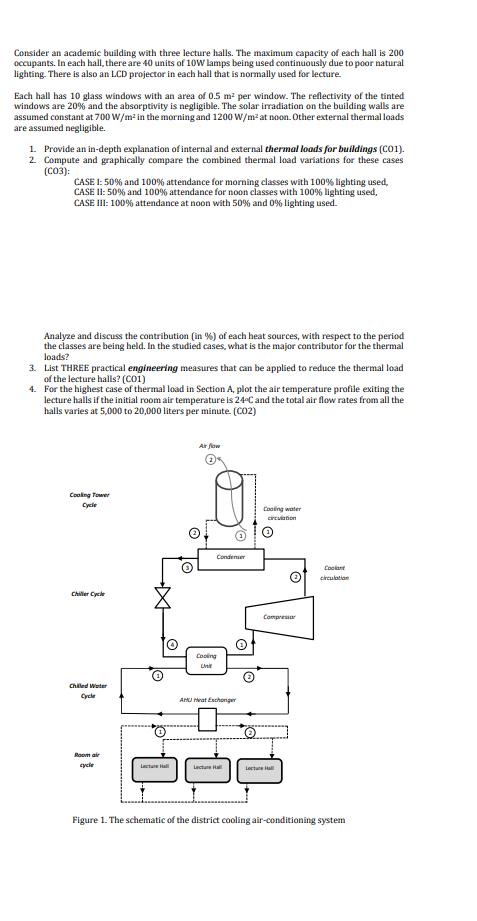Answered step by step
Verified Expert Solution
Question
1 Approved Answer
Consider an academic building with three lecture halls. The maximum capacity of each hall is 200 occupants. In each hall, there are 40 units

Consider an academic building with three lecture halls. The maximum capacity of each hall is 200 occupants. In each hall, there are 40 units of 10W lamps being used continuously due to poor natural lighting. There is also an LCD projector in each hall that is normally used for lecture. Each hall has 10 glass windows with an area of 0.5 m per window. The reflectivity of the tinted windows are 20% and the absorptivity is negligible. The solar irradiation on the building walls are assumed constant at 700 W/m in the morning and 1200 W/m at noon. Other external thermal loads are assumed negligible. 1. Provide an in-depth explanation of internal and external thermal loads for buildings (CO1). 2. Compute and graphically compare the combined thermal load variations for these cases (CO3): CASE 1: 50% and 100% attendance for morning classes with 100% lighting used, CASE II: 50% and 100% attendance for noon classes with 100% lighting used, CASE III: 100% attendance at noon with 50% and 0% lighting used. Analyze and discuss the contribution (in %) of each heat sources, with respect to the period the classes are being held. In the studied cases, what is the major contributor for the thermal loads? 3. List THREE practical engineering measures that can be applied to reduce the thermal load of the lecture halls? (C01) 4. For the highest case of thermal load in Section A, plot the air temperature profile exiting the lecture halls if the initial room air temperature is 24C and the total air flow rates from all the halls varies at 5,000 to 20,000 liters per minute. (CO2) Cooling Tower Cycle Chiller Cycle Air flow Cooling Unit Condenser Chilled Water Cycle AHU Heat Exchanger Room air cycle Lectur Cooling water circulation Compressor Coolant circulation Figure 1. The schematic of the district cooling air-conditioning system
Step by Step Solution
★★★★★
3.33 Rating (159 Votes )
There are 3 Steps involved in it
Step: 1
1 Internal Thermal Loads Internal thermal loads refer to the heat gain or loss within a building generated by internal sources Some common sources of ...
Get Instant Access to Expert-Tailored Solutions
See step-by-step solutions with expert insights and AI powered tools for academic success
Step: 2

Step: 3

Ace Your Homework with AI
Get the answers you need in no time with our AI-driven, step-by-step assistance
Get Started


